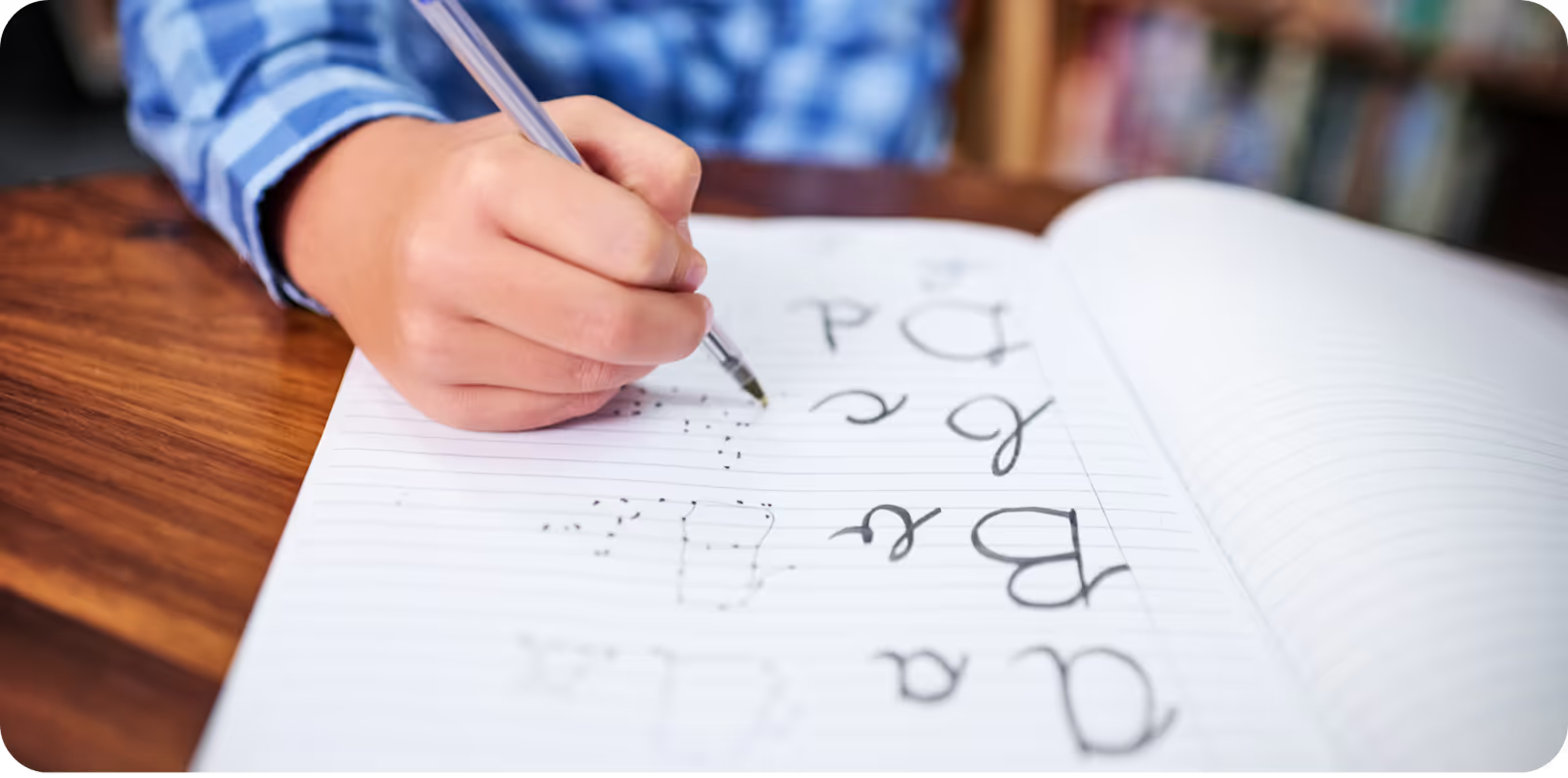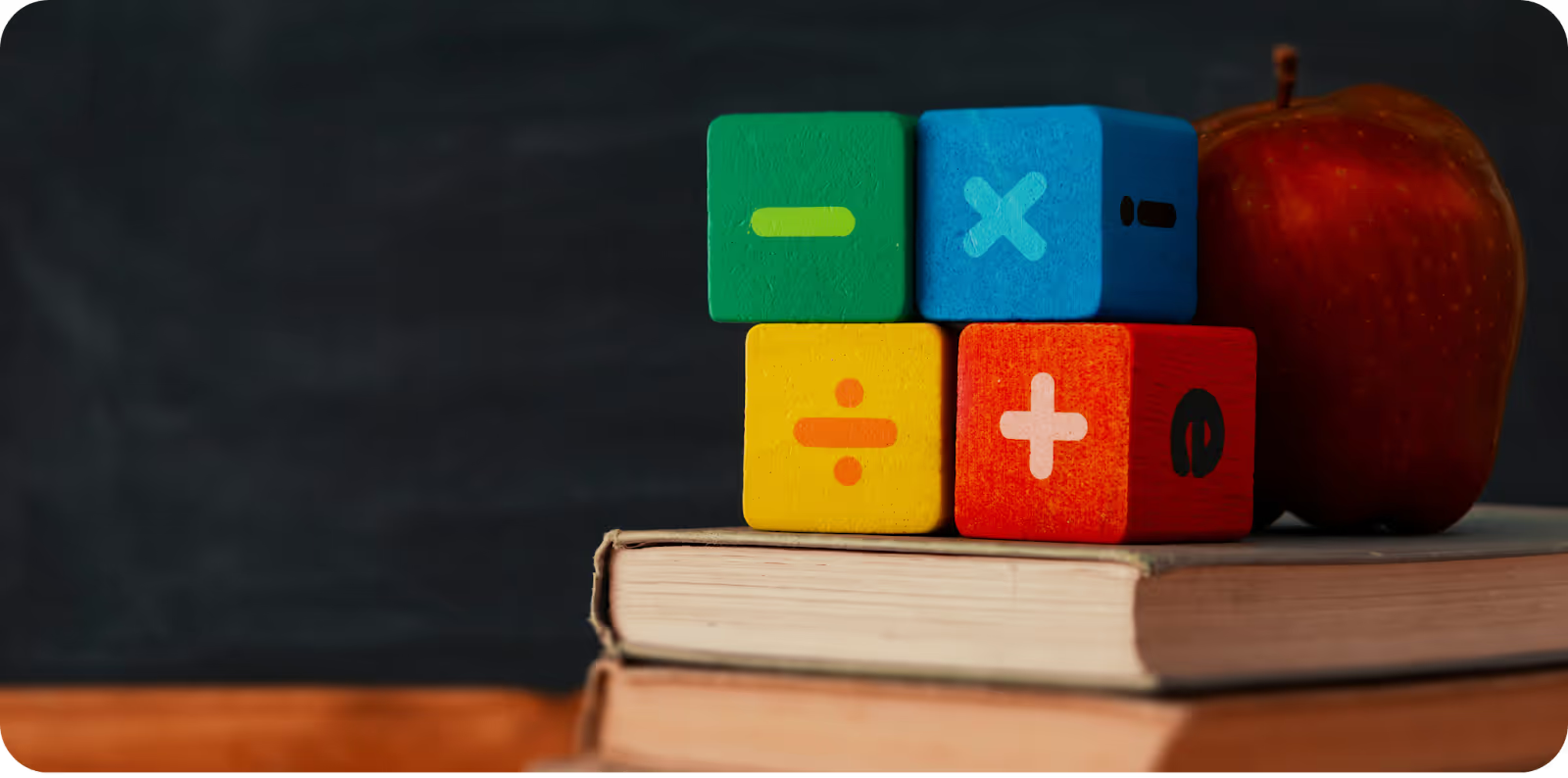Specific Learning Disorder: a real but often misunderstood difficulty

The relationship of many children and young people with school is not always easy.
For some, learning is a challenging processmarked by frustration, discouragement and a persistent sense of failure. These challenges affect not only school performance but also student self-esteem and family dynamics. 😞
It should be noted that, not always poor school results from a lack of effort or interest. Often the origin is in specific difficulties related to the form how the brain processes information and which compromise the consolidation of knowledge. 📖🧠
In this article, we deepen the concept of learning and explain what they are Specific Learning Disorders -how they manifest themselves, how they are diagnosed and which intervention strategies are most effective.
What is apprenticeship?
Surely, at some point in your life as a student, you have heard that “learning is more than decorating matter” and in fact, it is true! ✅
A apprenticeshipis one dynamic and continuous processwhere knowledge, skills and values are acquired that directly interfere with behaviors, decisions and the perception of the world around them.
This process involves several cognitive functions such as attention, perception, memory, language and logical reasoning that involves the functioning of different regions of the brain.
What are the types of learning?
It is not new that each person learns differently, which is perfectly natural and that makes the process, from an educational point of view, more challenging.
There are, therefore,different types of learning with which each person may have a greater or lesser preference/affinity:
🔸 Visual learning: Information is more easily retained through images, videos, diagrams or maps.
🔸 Auditory learning: Understanding is promoted through listening to explanations, debates or recordings.
🔸 Kinesthetic (or tactile) learning: The so-called “learning with experience”. It privileges learning through action, movement and contact.
🔸 Meaningful learning: When a new knowledge relates to something that the student already knows, becoming easily understandable and lasting.
🔸 Mechanical learning: Based on repetition and memory.
🔸 Social learning: Based on observation and interaction with other people.
Three essential factors for the learning process
As we have already had the opportunity to address in the article “Curiosities about the Human Brain”, learning depends on three fundamental elements:
1 ️ ⃣ Attention: To capture and interpret information.
2 ️ ⃣ Memory: To save information and “retrieve” it later.
3 ️ ⃣ Repetition: To consolidate knowledge and transform it into long-term memories.
Thus, regardless of the type of learning, only with these 3 factors is it possible to retain knowledge in a wayeffective and durable.

What is a Learning Disruption?
👉 Specific Learning Disorders have a neurobiological origin, being the result of the combination of genetic and environmental factors, affecting the efficiency of the brain in the perception and processing of information.
These disorders are named according to the type (s) of difficulty (s) presented by the child or young person, fromreading, writing and/or calculation.
Thus, children and young people with these disorders tend to reveallow self-esteem, anxiety and little persistenceface to school forum activities. This can culminate in behaviors of resistance or even withdrawal from tasks that confront them with difficulties.
However, it should be borne in mind that these children and young people nodiffer from their colleagues when it comes to the desire to study and learn. They have different learning needs and, therefore, need adapted strategies.
What are the types of Learning Disruption?
Specific Learning Disorders are not related to intelligence level, emotional factors or educational opportunities. Yes, they are related to changes in the formhow the brain processes certain information.Here are the main ones:
1) Specific Learning Disorder with Reading Deficit (Dyslexia)
A dyslexiais more than a difficulty in reading. It is a disorder that affects the person's ability to recognize and process written language.
These are persistent specific difficulties: in word recognition, decoding, reading fluency, single writing and spelling processes, often accompanied by feelings of frustration in academic and professional environments.
Types of dyslexia
Dyslexia can be distinguished into three types:
🔹 Phonological Dyslexia: Difficulty decoding new words and pseudo-words (combinations of letters with no real meaning used in tests to assess phonological reading ability).
🔹 Surface Dyslexia: Difficulty recognizing familiar words at first sight (visual memory of words).
🔹 Mixed Dyslexia: combination of the previous two.
Common Signs of Dyslexia
➡️ Difficulty in decoding words and understanding.
➡️ Slow and inaccurate reading.
➡️ Persistent problems with loneliness and phonological awareness, which is the difficulty in recognizing and manipulating speech sounds.
➡️ Frequent spelling mistakes.
➡️ Difficulty expressing thoughts in writing and organizing written work.
➡️ Difficulty following a sequence of instructions or events.
➡️ Take longer than expected to complete reading and writing tasks.
➡️ Challenges in the precise pronunciation of words.
➡️ Lack of motivation to study, sadness, frustration, anxiety, irritability.
➡️ Low self-esteem.

2) Specific Learning Disorder with Deficit in Written Expression (Dysorthography and Dysgraphia)
Both Dysorthography and Dysgraphia involve difficulties with written component.
A Dysorthography is a learning disorder that affects the correct writing of words and occurs even when the child performs well in reading and reasoning.
Yes to Dysgraphiaaffects the readability of the writing, its fluency and the organization of the text.
Common Signs of Dysorthography and Dysgraphia
➡️ Multiple spelling, grammatical and/or punctuation errors.
➡️ Disorganized and unclear written expression.
➡️ Perception of writing as extremely challenging and demotivating.
➡️ Difficulties in fine motor skills, associated with graphics and the grip of writing and cutting material.
As we have seen, although Dysorthography and Dysgraphia are included in the losses of writing, they are distinct disorders. In the evaluation and diagnosis process it is essential to identify whether the child's difficulties lie in spelling;and/orin grammar and punctuation; and/orin the clarity and organization of written expression. This distinction allows for a intervention more appropriate to the needs of the child or young person.

3) Specific Learning Disorder with Calculus Deficit (Dyscalculia)
A Dyscalculiais a disorder that interferes with the ability to understand and work with numbers and mathematical operations.
Common Signs of Dyscalculia
➡️ Difficulties in the field of the meaning of numbers.
➡️ Limitations in simple mental calculation.
➡️ Obstacles in converting thought into speech.
➡️ Failure in the application of numerical and calculation facts
➡️ Difficulty with mathematical reasoning.
➡️ Count with your fingers and get lost in the calculation
➡️ Manifestation of dizziness and headaches during reading.

How is a learning disorder diagnosed?
The diagnosis of a Specific Learning Disorder is a careful process that involves a complete, complex and delicate assessmentwhich considers: the medical, family and educational history, as well as school and psychopedagogical evaluations of the child or young person. 🔍🎯
Tendentially, the diagnosis is made two years after the start of the apprenticeshipof reading and writing, since many mistakes are part of the process. However, early warning signs can and should be valued, as they make it possible to implement early re-education strategies- fundamental to minimize the impact of difficulties and promote the school and emotional success of the child.
During the assessment, it is essential to understand whether the difficulties are persistent or are due only to a slower pace of learning, often corrected with time, training and neurological maturation itself.
At NeuroImprove, a neuropsychological evaluationwhich assesses the presence and severity of learning difficulties. In addition, a Quantitative Eletroencephalogram(qEEG) that helps identify brain patterns associated with difficulties.
With the results obtained, a personalized intervention planand focused on the needs and abilities of each child/young person.
What is the indicated intervention for a Learning Disruption?
👉 The intervention of NeuroImprove is distinguished by itsrigorous and integrated approach, oriented to the challenges and obstacles in all areas and contexts of life.
One of the tools used is the therapy of Neurofeedback, a brain training technique that:
- Potentiates an improvement in focus and on concentration;
- It helps to reduce the stress
- Promotes greater control of anxiety.
As a result and over time, there is an improvement in performance that promotes the person's self-esteem.
At the same time, our clinic also offers sessions of Clinical Psychology which allow the re-education of areas in difficulty and the promotion of emotional balance.
The ultimate goal is the marked improvement of difficulties in the school, social and family spheres. 😊
What is the relationship between Specific Learning Disorders and PHDA?
An article written by Anthony andl. states that Specific Learning Disorders occur frequently and simultaneously with other neurodevelopmental disorders such as Autismor a PHD(Attention Deficit Hyperactivity Disorder).
✏️ Children with PHDA tend to have more difficulty maintaining attention, following instructions and organizing thinking, which aggravates learning challenges.
Thus, it is essential to correctly identify both conditions to ensure an effective and differentiated intervention.
Final Considerations
👉 Specific Learning Disorders are real challengeswhich can profoundly impact children and young people at different levels (self-esteem, motivation and school path).
However, with the right support, it is possible to circumvent these barriers and promote a reduction of these difficulties by promoting autonomy, self-confidence and educational success.
We all learn differently and have different levels of difficulty as well, and that's all right. With motivation, patience and the right support, they can be found strategies that help in the educational process- respecting the rhythm, style and individual talents. 💙
References
Busan A. MR. (2014). Learning styles of medical students - implications in education. Current health sciences journal, 40 (2), 104—110. https://doi.org/10.12865/CHSJ.40.02.04
Cherukunnath, D., & Singh, A. P. (2022). Exploring Cognitive Processes of Knowledge Acquisition to Upgrade Academic Practices. Frontiers in psychology, 13, 682628. https://doi.org/10.3389/fpsyg.2022.682628
Chieffo, D. P. R., Arcangeli, V., Moriconi, F., Marfoli, A., Lino, F., Vannuccini, S., Marconi, E., Turrini, I., Brogna, C., Veredice, C., Antonietti, A., Sani, G., & Mercury, E. MR. (2023). Specific Learning Disorders (SLD) and Behavior Impairment: Comorbidity or Specific Profile?. Children (Basel, Switzerland), 10 (8), 1356. https://doi.org/10.3390/children10081356
Grigorenko, E. L., Compton, D. L., Fuchs, L. S., Wagner, R. K., Willcutt, E. G., & Fletcher, J. MR. (2020). Understanding, educating, and supporting children with specific learning disabilities: 50 years of science and practice. The American psychologist, 75 (1), 37—51. https://doi.org/10.1037/amp0000452
Monteiro, P., S., R. (2024). Specific learning disorders: dyslexia, dysgraphia, dysorthography and dyscalculia in focus. Review. doi: 10.69849/revistaft/pa10202411172003
Moura, O., Pereira, M., Simões, M. R. (2018). Dyslexia: Theory, Evaluation and Intervention. Pactor
Reed, M. S., Evely, A. C., Cundill, G., Fazey, I., Glass, J., Laing, A., Newig, J., Parrish, B., Prell, C., Raymond, C., & Stringer, L. C. (2010). What is Social Learning? Ecology and Society, 15 (4). http://www.jstor.org/stable/26268235
Tavares, R. (2004). Meaningful learning. Conceitos Magazine. Unijuí
We Train Brains, Strengthen Minds, Transform Lives
Schedule an appointment and see how we can help your family.
No time for a call now? Leave your details and we will get in touch:

Wonderful team, concerned, attentive and always available to help in everything.
With the passage of time, the results are being verified.
I am grateful to have met Neuroimprove and all its professionals.




